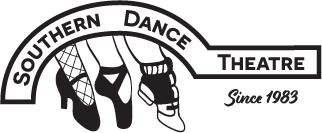Dance-Related Injuries
It was Albert Einstein who said that “Dancers are [the] athletes of God.” His expression on athleticism required by dancers is more accurate than he may have realized. Modern science has pushed the boundaries of what dancers can do with their bodies. This, though, has created its own set of problems, specifically, the increased risk of injury.
According to Dr. David Mote (2011) of Mote Wellness and Rehab, Inc., “artistic movements in dance place specific demands on the body in terms of endurance, aerobic capacity, muscle strength, overall flexibility, joint stability, and neuromuscular coordination.” New York University’s Langone Medical Center (2011), cites the most common dance related injuries as neck and back strain/sprain, shoulder strain/sprain, hip-knee-ankle strain/sprain, and acute/overuse injuries.
While the standard procedure of care for a dancer who suffers an acute injury is R.I.C.E. (rest, ice, compression, and elevation) for the first 24 hours, injured dancers are strongly encouraged to seek immediate medical attention if there are significant signs of swelling and bruising as this may be a sign of a more serious injury. Simply bracing the injured area and taking medications for pain and swelling does nothing to rehabilitate the injured tissues and may possibly compound the problem. As a rule, dancers should consult with a physician or physical therapist in dealing with a new or recurring injury.
Physicians best suited to treat dance related injuries are those most familiar with musculoskeletal injuries and body mechanics-orthopedists, chiropractors, and doctors of physical medicine. The goal of the treating physician can be summarized as treatment and management, injury prevention, comprehensive care of acute and chronic injuries, correction of deficits for chronic injury and maintenance of an optimal functional status to facilitate continued practice of the dance discipline. Because physical therapists and chiropractors receive specialized training in physics, human anatomy, and kinesiology, they understand how the body works and how to strategize the development of a full range of movement. They know how to manage all four of the body’s major systems (musculoskeletal, neuromuscular, cardiovascular, and integumentary) to restore maximum mobility.
Southern Dance Theatre Policy on Dance-Related Injuries
SDT is not recommending any specific physician or method or recovery; we do encourage that dancers seek professional direction for injuries; this includes therapy to rehabilitate the area(s) of weakness, especially if injured areas have been immobilized for a period of time.
While injuries can be heartbreaking for dancers, this does not mean they need to stop phsyical activity altogether. Consider the following:
-
It is not advisable for a dancer to continue his or her normal schedule of classes and performances when faced with an injury; a dancer should adhere to a modified schedule of activity.
-
Still, “some sort of movement can help a dancer recover from injury by keeping the blood circulating and stimulating the body’s healing system” (Mote, 2011).
-
Dancers should stretch and strengthen their bodies (not just the injured parts) while attending classes until they are able to fully participate in their dance programs.
-
We encourage the dancer to “move” (participate) in some aspect of the dance class while not aggravating the recovery of the injury or going against the medical orders of the treating physicians or physical therapists.
-
If the dancer is unable to participate in any part of the class, it is recommended that they not attend class until such time as they can restart their training.
Resources:
Langone Medical Center, NYU, Harkness Center for Dance Injuries, Hospital for Joint Diseases. (2011) Common Dance Injuries. Retrieved from http://hjd.med.nyu.edu/
Mote, D. (2011). Mote Wellness and Rehab. Retrieved from http://docmote.com/about_us/Dr_David_R Mote.htm
